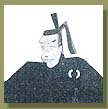|
The designation, "a warriors' tea ceremony" may give the impression that it's out-dated and irrelevant, having nothing in common with modern values. But quite to the contrary, we believe that traditional values, including those of the warriors' class, should be called upon now so that we can regain the cultural undercurrent of our society. For samurai warriors, it was vital to acquire strength, both physical and mental, to face various adversaries including death. Starting off the rough-edged and uncultured, warriors felt the need to become more culturally sophisticated as their social status became raised and they began replacing kuge court members as the most powerful rulers. Tea ceremony culture, having Zen Buddhism as its spiritual base, was most suited as the tool of day-to-day self discipline and as a source of enjoyment. Chinshin saw tea ceremony culture as a graceful pastime which helps a samurai to discipline himself culturally and at the same time martially. He said therefore samurai tea ceremony must be forceful yet graceful. His tea ceremony aim was to nurture a kind of spiritual strength that a samurai was expected to possess so that he could face any situation with calmness. An old Chinshin-ryu manuscript states that tea ceremony is not for merry-making but is a way to discipline one's mind. Samurais have long since ceased to exist but basic human nature remains for the most part unchanged. That's where the role tea ceremony can play comes in. Humans are born with all kinds of weaknesses and it is no easy task to become a person worthy of the designation "a true human being." In this highly industrialized and mechanical society, a man's value is too often determined by the level of his professional skills and resulting amount of wealth he may acquire but his value as a human is too often sadly overlooked. Tea ceremony naturally does not solve all problems but we believe that, if approached properly, it can help elevate one's spiritual standard and help him acquire a kind of well-rounded personality. Until the end of the Edo period, Chinshin-ryu was practiced mostly within the Matsura household and among its subordinates. After the Meiji Restoration, the then head of the family, Matsura Shingetsu strived to keep tea ceremony tradition alive in face of the onslaught of western cultures. It was also he who encouraged ladies to take up tea ceremony, which formerly was the men's activity. Shingetsu laid the foundation for present-day Chinshin-ryu. The head of the Chinshin-ryu tea ceremony, Akira Matsura. |
